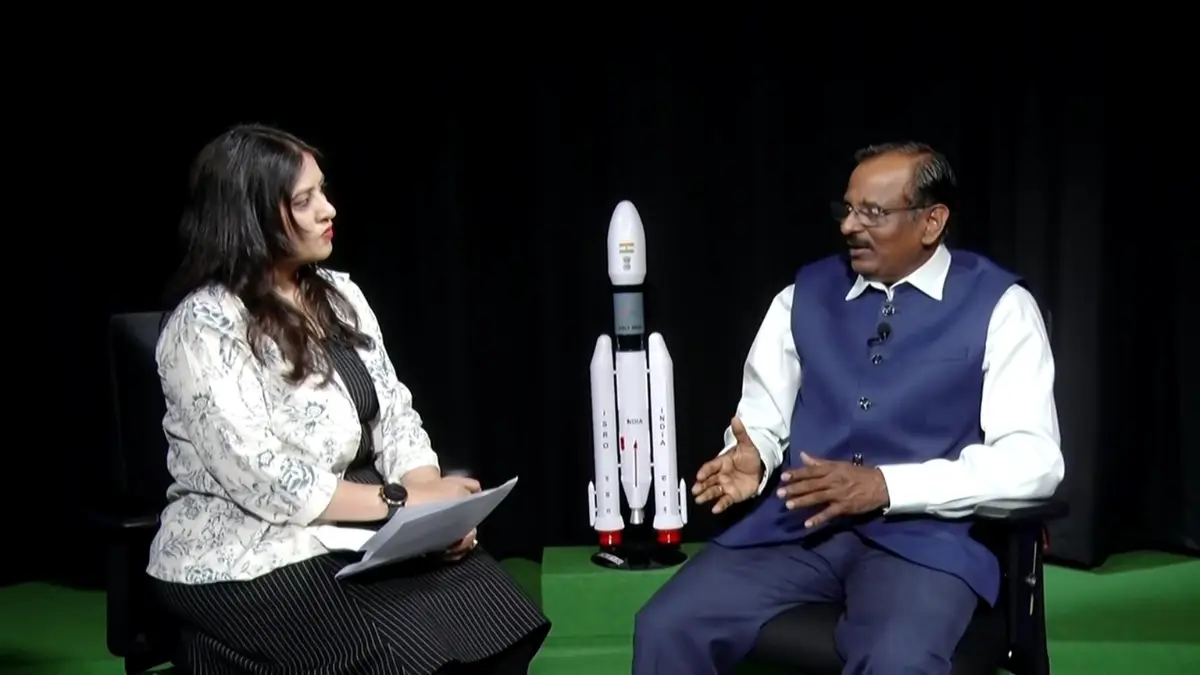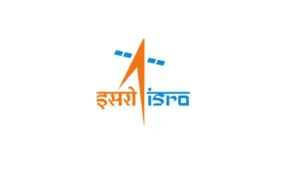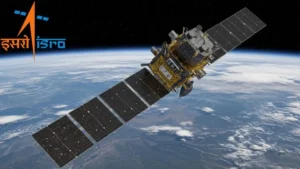V Narayanan, the newly appointed Chairman of the Indian Space Research Organisation (ISRO), unveiled the future roadmap of India’s space missions. Narayanan, who is also the Secretary of the Department of Space, rocket scientist, and aerospace engineer, spoke about India’s growing space capabilities and ambitious missions set for the coming years. His insights cover launch vehicle technology, human spaceflight, interplanetary missions, space station developments, and much more. Here’s a detailed account of what lies ahead for ISRO, as shared by Narayanan.
Advancements in ISRO’s Launch Vehicle Technology
One of the key highlights of the discussion was ISRO’s next-generation launch vehicles. Narayanan detailed the progression of ISRO’s launch vehicle capabilities, beginning with the SLV 3 in 1979, which could carry a payload of 40 kg to Low Earth Orbit (LEO). Today, ISRO has reached significant milestones, including its 100th launch, with the ability to send up to 8,500 kg to LEO.
Looking to the future, ISRO is developing a next-generation launch vehicle that will be capable of carrying a staggering 30,000 kg payload to LEO—an increase of 1,000 times over the SLV 3. This vehicle will feature three stages, two solid strap-on boosters, and nine engines in the first stage, each providing 110 tonnes of thrust. Additionally, the vehicle introduces reusability by recovering the first stage after launch, enhancing cost-efficiency and sustainability in space operations.
Gaganyaan and Chandrayaan-4: India’s Human and Lunar Missions
Gaganyaan Mission: India’s First Human Spaceflight
Narayanan also discussed the Gaganyaan mission, set to launch in 2026. This mission aims to send three Indian astronauts into Low Earth Orbit (LEO) at 400 km altitude. The mission will use the human-rated LVM 3 (HLVM 3) vehicle, which has been upgraded with enhanced structural and thermal margins to ensure astronaut safety.
The Gaganyaan mission will undergo several uncrewed test flights, with the first one scheduled for later this year from Sriharikota. The astronaut training program is also underway, with astronauts undergoing rigorous physical and technical training to prepare for this historic journey.
Chandrayaan-4: Lunar Exploration
On the subject of Chandrayaan-4, Narayanan revealed that the mission, slated for 2027, will be a quantum leap from the successful Chandrayaan-3 mission. While Chandrayaan-3 focused on the Moon’s surface, Chandrayaan-4 will target the Moon’s south pole, an unexplored region, and will involve sample collection and further experiments.
Chandrayaan-4 will be a 9,200 kg satellite, launched in two Mark III rockets. It will be assembled in five modules, with two modules docking in lunar orbit, and two landing on the Moon’s surface to conduct experiments. The sample return module will return to Earth after completing its tasks in lunar orbit.
ISRO’s Space Docking Achievements and Future Space Station
SpaDEX Mission: India’s First Satellite Docking in Orbit
Another significant milestone for ISRO was the SpaDEX mission, which successfully achieved satellite docking in Low Earth Orbit (LEO) on January 16th, 2025. India became the fourth country to achieve such a feat. In this complex procedure, two 20 kg satellites, initially separated by 11 to 12 km, successfully docked after precise control and measurement. The satellites now rotate as a unified system, with power transfer between them about to begin.
This docking achievement paves the way for ISRO’s future endeavors, including the development of a five-module space station, with the first module scheduled for launch in 2028.
India’s Expanding Satellite Infrastructure
Narayanan emphasized India’s growing satellite infrastructure, with 131 satellites currently in orbit, 56 of which are actively serving national needs such as telecommunication, navigation, and border monitoring. To meet the increasing demand for space-based services, ISRO has engaged private companies to build and launch satellites. ISRO supports these companies with technical expertise, facilities, and access to satellite launch opportunities, fostering innovation and collaboration in the space sector.
Enhancing India’s Navigation Capabilities: The NavIC System
Narayanan spoke about NavIC, ISRO’s navigation satellite system, which is crucial for India’s strategic and civilian applications. The system’s Phase I has already been deployed, with five more satellites to be launched in Phase II. The goal is to complete the satellite deployment within the next two years, significantly enhancing India’s global navigation capabilities.
Space Sustainability: Addressing Space Debris
With the growing number of satellites in space, space debris has become a pressing issue. Narayanan discussed ISRO’s Space Situational Awareness (SSA) program, which monitors debris in real time during satellite launches to assess potential risks. ISRO is also developing strategies to manage and remove debris, including repositioning satellites or refueling them for continued use, preventing them from becoming hazardous space junk.
Upcoming Scientific Missions: Venus, Mars, and the Moon
Venus and Mars Missions
ISRO is preparing for interplanetary missions, including missions to Venus and Mars. Narayanan highlighted the Venus mission, which will provide insights into the planet’s surface and atmosphere. Additionally, the Mars Orbiter Mission will continue exploring the Red Planet, enhancing our understanding of its geology and atmosphere.
Lunar Polar Exploration (LUPEX)
Another exciting mission for ISRO is the Lunar Polar Exploration Mission (LUPEX), a collaboration with the Japanese Aerospace Exploration Agency (JAXA). This mission will involve a 250 kg rover, much larger than the 25 kg rover used in Chandrayaan-3, further advancing lunar exploration.
Future Solar Missions: Aditya-L1 and Beyond
Narayanan also discussed ISRO’s solar missions, particularly the success of Aditya-L1, which provided valuable data on the Sun’s behavior. This mission serves as the foundation for future solar research, offering insights into space weather and the Sun’s impacts on space and Earth systems.
ISRO’s Vision for the Next Decade
Looking ahead, ISRO’s key priorities for the next decade include:
- Gaganyaan and Chandrayaan-4 missions.
- Next-generation launch vehicles with higher payload capacity and reusability.
- Building a space station for scientific experiments and interplanetary exploration.
- Enhancing India’s satellite infrastructure to support applications in communication, navigation, and disaster management.
Narayanan emphasized that ISRO is committed to building low-cost access to space, with the Mark III vehicle being upgraded to increase its capacity by 25%, while also reducing launch costs.
ISRO’s Leadership in Space Exploration
Narayanan’s leadership continues to elevate ISRO’s status in the global space community. From being 70 years behind in space technology, India has now emerged as a global leader in space exploration. ISRO’s growing expertise and commitment to serving the common people of India will ensure that the nation plays a leading role in shaping the future of space exploration.
As India celebrates 100 years of independence, ISRO’s achievements, including its human spaceflight program and lunar exploration, will be key milestones in India’s journey to becoming a developed nation.
Summary of the News
| Category | Details |
|---|---|
| Why in News? | V Narayanan, the newly appointed Chairman of ISRO, shared India’s future space roadmap, including Gaganyaan, Chandrayaan-4, interplanetary missions, and space station development. |
| Key Missions | – Gaganyaan Mission (2026): India’s first human spaceflight to 400 km Low Earth Orbit (LEO). – Chandrayaan-4 (2027): A 9,200 kg satellite targeting the Moon’s south pole, with sample collection and experiments. |
| Advancements in Launch Vehicle Technology | ISRO’s next-gen launch vehicle can carry 30,000 kg to LEO, marking a 1,000-fold increase in payload capacity from the SLV 3. The vehicle will feature reusability with first-stage recovery. |
| SpaDEX Mission | ISRO achieved satellite docking in LEO in January 2025, becoming the 4th country to do so. The success paves the way for a five-module space station scheduled for 2028. |
| India’s Satellite Infrastructure | India has 131 satellites in orbit, with 56 actively serving national needs like telecommunication and border monitoring. ISRO collaborates with private companies for satellite development. |
| NavIC System | Phase II of the NavIC navigation satellite system will deploy five more satellites, enhancing India’s global navigation capabilities. |
| Space Sustainability | ISRO is tackling space debris through the Space Situational Awareness (SSA) program, with strategies like repositioning satellites and refueling to avoid collisions. |
| Upcoming Scientific Missions | – Venus and Mars Missions: Interplanetary research into the Venus surface and Mars’ geology. – Lunar Polar Exploration Mission (LUPEX) (with JAXA): Features a 250 kg rover, enhancing lunar exploration. |
| Solar Missions: Aditya-L1 | Aditya-L1 has provided crucial data on the Sun’s behavior, setting the foundation for future solar research. |
| ISRO’s Vision for the Next Decade | – Focus on Gaganyaan, Chandrayaan-4, next-gen launch vehicles, and building a space station. – Satellite infrastructure to support communication, navigation, and disaster management. |
| ISRO’s Leadership in Space Exploration | ISRO’s global leadership in space exploration is highlighted by its achievements and commitment to India’s development, with a focus on human spaceflight and lunar exploration. |



 ISRO Launches RESPOND Basket 2025, Calls...
ISRO Launches RESPOND Basket 2025, Calls...
 LVM3-M6 Rocket Set to Launch on December...
LVM3-M6 Rocket Set to Launch on December...
 Michaela Benthaus to Make History as Fir...
Michaela Benthaus to Make History as Fir...







